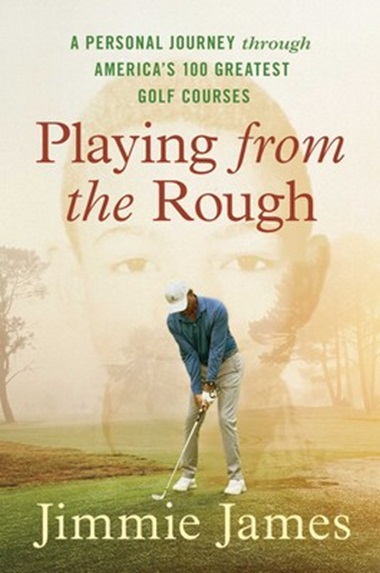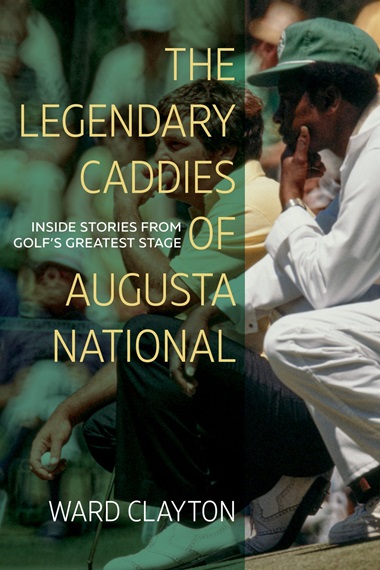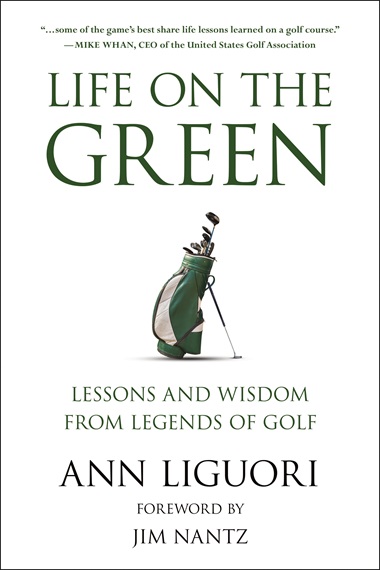 When he retired from a high-powered three decade-plus career with ExxonMobil as engineer and executive at the age of 58, Jimmie James knew he’d need some kind of challenge to keep his active mind sane. As he details in Playing From the Rough (Simon & Schuster, $28.99), his wife inadvertently supplied it when she managed to arrange a round of golf for him at Augusta National.
When he retired from a high-powered three decade-plus career with ExxonMobil as engineer and executive at the age of 58, Jimmie James knew he’d need some kind of challenge to keep his active mind sane. As he details in Playing From the Rough (Simon & Schuster, $28.99), his wife inadvertently supplied it when she managed to arrange a round of golf for him at Augusta National.
With that rarefied tee time in hand, Jones began putting his engineering skills to work in plotting a scheme to play all of the courses on Golf Digest’s Top 100 list. Not a new idea, perhaps, but James set himself some additional goals—to accomplish the feat in a year’s time and, as far as possible, relying strictly on invitations to the mostly private courses, rather than making direct requests. A plan he acknowledges could have been complicated by his being a Black man.
“The goal was not just to play all of the courses but to see if strangers would voluntarily help me. I wanted to see if America could still be a place that was generous enough, enthused enough, and willing enough to help a stranger achieve his dream.”
Since he lets us know in the early pages, there’s no need of a spoiler alert to say that he succeeds, “without a day to spare. I flew 73,284 miles, drove another 17,472, and spent eighty-two nights in hotels or other people’s homes.”
Thanks to his globe-trotting career, James had the resources and travel reward points to pull off what he admits is a “frivolous odyssey,” his “panoply of privilege.” But he clearly also needed the personality to pull it off, one he forged in his youth, which was beset by terrible poverty, a drunken and violent stepfather, yet fortified by a steadfast mother.
So the narrative doesn’t read like a mere lark. As he goes from course to course in the book James flashes back to his difficult childhood in east Texas, but shows how his clear-eyed view of it turned him into a goal-setter with ambitions he began ticking off as accomplishments—first in his family to finish high school, first to go to college….
It surely helped, too, that James had a decent game—the entire trip took him 8,797 strokes on courses that were far from pushovers. He may relate a few too many of those strokes in the course of the book, but the pleasure comes from the company he winds up keeping. As he succinctly puts it: “Golf is a solitary sport best played with as many people as possible.”
<<<>>>
 Until 1975, when Lee Elder broke the color line at the Masters, all the players were white and all the caddies were Black. And say what you will about Augusta National’s racial history, the caddies took little umbrage; many came from the largely Black Augusta neighborhood of Sand Hills, and they saw caddying as a chance to step up in life.
Until 1975, when Lee Elder broke the color line at the Masters, all the players were white and all the caddies were Black. And say what you will about Augusta National’s racial history, the caddies took little umbrage; many came from the largely Black Augusta neighborhood of Sand Hills, and they saw caddying as a chance to step up in life.
The frequent path was to begin caddying at the Augusta Country Club and then graduating, so to speak, to the adjacent Augusta National, and if lucky snagging the bag of a Masters player when the tournament rolled around in April.
It’s a little hard to believe that it’s been 41 years since it all changed—when in 1983 the tour pros were finally allowed to bring their regular caddies to the Masters. Thereafter, only Carl Jackson emerged from the former caddie ranks to loop for a Masters winner—Ben Crenshaw, in 1984 and 1995.
In The Legendary Caddies of Augusta National (Blair, $19.95) Ward Clayton revisits the subject of his 2004 book, Men on the Bag: The Caddies of Augusta National, in what is essentially a revision and an update. The update is poignant, as most of the Black caddies have now passed on.
Clayton was also one of the producers of the 2019 documentary film “Loopers: The Caddie’s Long Walk” (reviewed here) which had a lot of Augusta material in it as well, so he knows the territory, and he’s stocked the book with a ton of great stories about the caddies and the players they looped for.
There’s Jackson and Crenshaw to be sure, with the emotional finish to the 1995 Masters, scant days after Crenshaw had been a pallbearer at his mentor Harvey Penick’s funeral. But there’s Stovepipe (last name uncertain), who wore a top hat while caddying for Gene Sarazen during the latter’s double eagle at the second Masters.
There’s Iron Man Avery (Nathaniel), who caddied for all four of Arnold Palmer’s Master victories; Willie (Pete) Peterson, on the bag for five of the six Jack Nicklaus wins, tying him with Willie “Pappy” Stokes for the most caddie wins, though Pappy’s were with four different players (two with Ben Hogan).
And there’s Dead Man Willie Perteet, so nicknamed because he was once attacked and stabbed by a former girlfriend and some of her friends and left for dead. He was actually assumed dead and as he put it, “They took me to a room in the morgue… [a] few minutes before the inquest I suddenly rose up, and that orderly ain’t been seen ‘round town since.”
President Dwight Eisenhower changed his nickname to Cemetery, and that’s the way it remained as long as Perteet remained Ike’s caddie at Augusta, from 1948 to 1957.
<<<>>>
 I’ve played golf in several countries with Ann Ligouri, and we often joke that she once took an elective golf class from my brother-in-law during her undergrad days at the University of South Florida. Since then Ann has gone on to a sterling career in sports broadcasting. Nonetheless, I will gently chide her the next time we meet for her overuse of the exclamation point.
I’ve played golf in several countries with Ann Ligouri, and we often joke that she once took an elective golf class from my brother-in-law during her undergrad days at the University of South Florida. Since then Ann has gone on to a sterling career in sports broadcasting. Nonetheless, I will gently chide her the next time we meet for her overuse of the exclamation point.
Beyond that, there’s little to criticize in Life on the Green (Hatherleigh Press, $18), a collection of twelve interviews she conducted with a dozen inarguable greats of the game: Padraig Harrington, Tom Watson, Jan Stephenson, Amy Alcott, Nicklaus, Gary Player, Dottie Pepper, Renee Powell, Crenshaw, Annika Sorenstam, Nancy Lopez and Bernhard Langer.
The subtitle of the book is “Lessons and Wisdom from Legends of Golf,” but these are life lessons, not playing lessons. Some of this gets a little platitudinous (Nicklaus seems particularly windy in this regard). There are undoubtedly lessons and parallels between golf and life, but golfers, no matter how legendary, aren’t philosophers. So there are only so many ways one can highlight the need for patience, goal-setting, trust, faith and positivity. Renee Powell may have the most powerful chapter in the book, since she had to battle chauvinism and racism, as only the second Black women to join the LPGA (Althea Gibson was the first).
But when the players get down to some specific anecdotal material about actual tournaments or Ryder Cup or Solheim Cup matches, things take off. Nicklaus somewhat redeems himself here, but Watson is even better in talking about his rivalry with Nicklaus, about the Turnberry “Duel in the Sun” of 1977 or the near miss in the 2009 Open Championship that Watson almost won at age 59, again at Turnberry,
 Crenshaw talks more about that poignant 1995 Masters (and Carl Jackson) and the amazing comeback at Brookline at the 1999 Ryder Cup. Harrington has an unusual take on how, “I perform my best with fear. When my back is to the wall, I am great in that situation. I struggle the most when I’m confident.”
Crenshaw talks more about that poignant 1995 Masters (and Carl Jackson) and the amazing comeback at Brookline at the 1999 Ryder Cup. Harrington has an unusual take on how, “I perform my best with fear. When my back is to the wall, I am great in that situation. I struggle the most when I’m confident.”
And reading Bernhard Langer on his battles with the yips should be enough to instill fear in any golfer. Harrington should feast on this chapter.
This piece originally appeared in the June-July 2024 issue of Golf Oklahoma, in somewhat different form.

